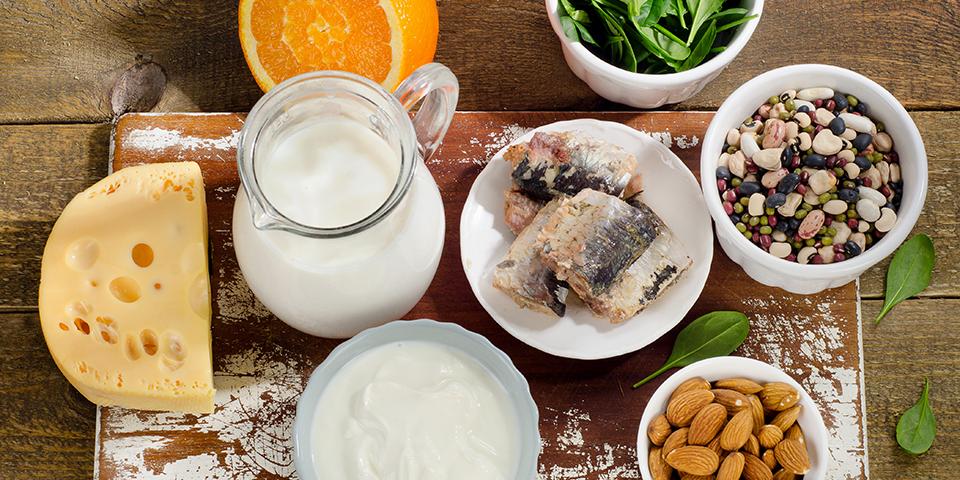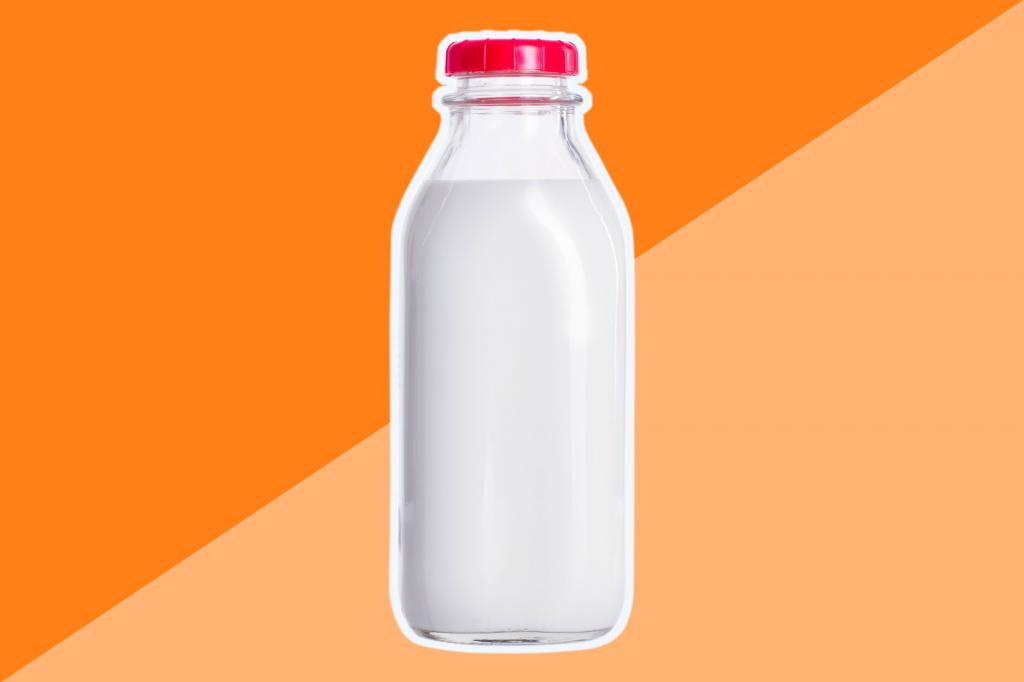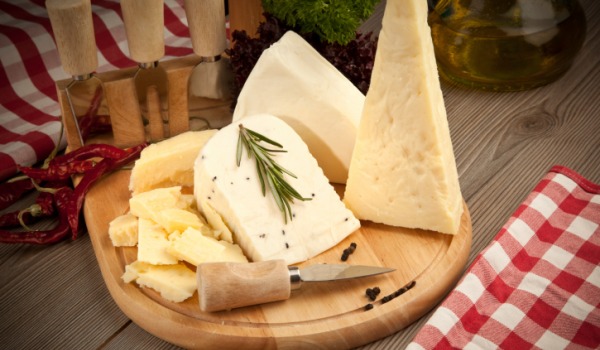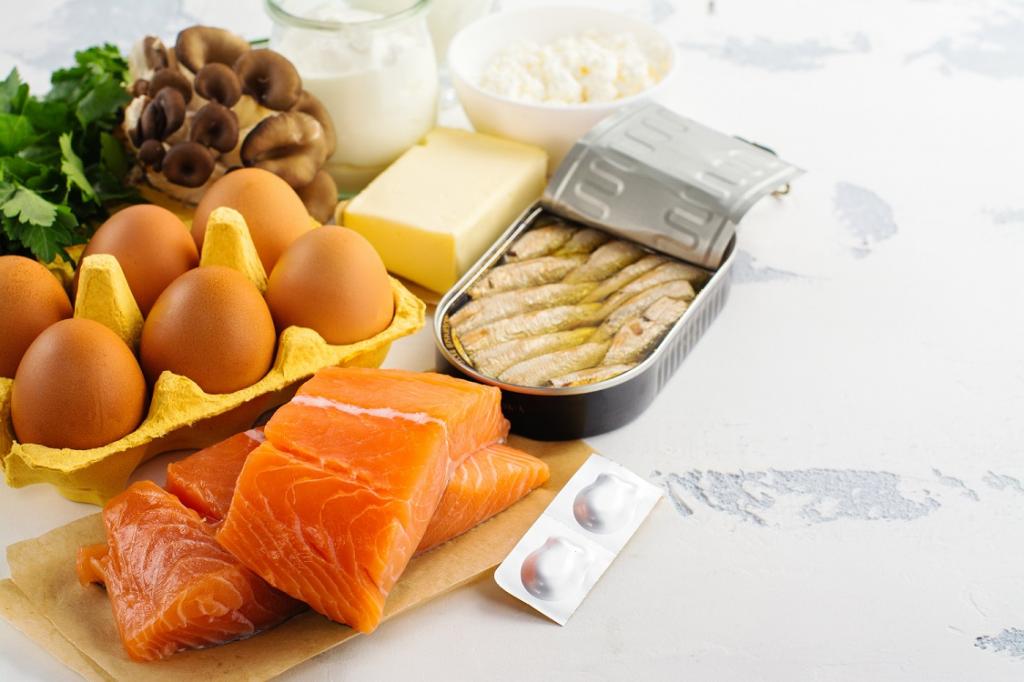From time to time in our body there is a shortage of certain vitamins, which affects our health and appearance. In order for all body systems to function normally, nutrition must be as balanced and saturated as possible with those minerals that affect the functioning of certain organs. But how do you know how to create your daily menu so that our cells receive everything they need? It is known that certain trace elements can be obtained from food in which they are found the most. In this article, we consider what foods contain vitamin D and why a person needs it.
What is vitamin D?
It is believed that it is obtained from solar energy. And this has a basis, for this fat-soluble vitamin is formed in the skin cells under the influence of direct ultraviolet rays. Most often, the body uses ergocalciferol D2 and cholecalciferol D3 in equal amounts. To completely cover the deficiency of vitamin D3, it is enough to take sunbaths up to half an hour three times a week. To replenish D2 reserves, you need to eat food containing this component. However, which foods have the highest vitamin D content? You need to know this in order to more efficiently enrich your body with these useful substances.
Vitamin D is most found in products of animal origin, although it is also present in plant foods, but in smaller quantities. The importance of this substance for the harmonious development of man is difficult to overestimate. It regulates the metabolism of calcium and phosphorus in the blood , helps in the normal development of bones, teeth and nails, strengthens the skeleton and gives it sufficient strength for a normal life, forms and strengthens muscles. Without this vitamin, each of us would have been very tight. Therefore, it is so important to understand which foods contain more vitamin D.

The value of vitamin for the human body
Man is a very complex organism, and he develops according to the program that nature has laid down in him. For example, calcium is supplied primarily to meet the needs of nerve cells. And although this requires only 1% of the total amount of the mineral, but if it is deficient, this amount will be absorbed from the bones of the skeleton, which will gradually weaken it. If you do not replenish calcium reserves in a timely manner, then various diseases can occur, possibly even the cessation of the muscle system and, as a result, cardiac arrest. To prevent such a sad outcome, you should not allow a shortage of this mineral in the body and it’s good for you to learn which foods contain more vitamin D. After all, it is he who is responsible for its absorption.
In addition, this useful vitamin is absolutely necessary to ensure good blood coagulation, regulate blood pressure, accurate heart function, as well as for sufficient excitability of nerve cells. It also improves immunity, has a beneficial effect on the condition of the skin, the proper functioning of the intestines and kidneys, prevents the appearance of rickets and osteoporosis, and normalizes the function of the thyroid gland. This vitamin has proven to be very effective in the prevention of cancer and even in their treatment, as well as in the fight against AIDS.
Consumption rate for people of different ages
Before proceeding to consider which foods contain the most vitamin D, you need to consider what is the body's need for this substance. According to medical indicators, for a healthy adult, the daily norm is from 2.5 to 5 μg, for pregnant and lactating women - 10, for babies - from 7.5 to 10, for children - from 2.5 to 10 (depending on their gender and age), older people after 60 years are shown 10-15 mcg.
It should be noted that in certain amounts of vitamin D is found in products such as nettle, horsetail, parsley, mushrooms, and yeast. There is also a lot of it in chicken eggs, herring, milk and dairy products, animal liver, fish oil, tuna, sardines, salmon, mackerel, trout, caviar. In which foods are most vitamin D, consider a little lower. In the meantime, another important issue needs to be addressed. What are the symptoms of vitamin D deficiency and overabundance? Read about it later.

The main signs of a lack of vitamin D in the body
The lack of vitamin D in the human body is fraught with serious consequences. But uncontrolled saturation of cells with this element can also bring many problems. That is why a balanced consumption of products is so urgent to stay on the fine line that indicates the norm. Here are the main symptoms that appear when there is a deficiency of this substance or an overdose of it, so that it is easier for you to navigate in your condition and understand to strengthen or weaken the intake of products that contain vitamin D. In which products it is present, it has already been noted, but we will stop on this in more detail a little later.
Symptoms of a lack:
- severe depression;
- muscle weakness;
- spoiled teeth;
- thickening and pain in the joints;
- poor appetite;
- persistent insomnia;
- weight loss;
- poor eyesight;
- burning sensation in the mouth and larynx.

The main signs of an excess of vitamin D in the body
It is believed that an overdose is even more dangerous than a lack of this element. Symptoms of an excess of vitamin D:
- severe weakness;
- nausea;
- joint pains are sharp;
- loss of appetite;
- manifestation of diarrhea or constipation;
- headache and muscle pain;
- slow heart rate;
- feverish conditions;
- labored breathing;
- high blood pressure;
- cramps
- osteoporosis;
- atherosclerosis;
- deposition of calcium salts in different organs, which makes it difficult for them to fulfill their basic functions.
What should alert and what to do in case of deficiency?
With a deficiency, according to doctors, it is very difficult to replenish the required amount of vitamin D with food only - additional medications will be required to fully satisfy the needs of the body. In any case, if you notice signs of a deficiency or an overdose, do not self-medicate and consult a doctor. In a medical institution, according to the results of a laboratory study, it will be precisely established how much and what is missing. Based on these data, the specialist will prescribe the correct treatment, and you will not expose your body to various troubles. In addition, the doctor will give you recommendations on nutrition, tell you which foods have the most vitamin D and in what quantities they should be consumed.
So, with a lack of vitamin D, even one of the following signs should alert you:
- If you are often sick, that is, you have reduced immunity and the body very weakly resists viruses, infections and bacteria. Constant colds, flu, bronchitis, pneumonia may well haunt you due to a lack of this substance in the body.
- If you have chronic fatigue and a noticeable lack of energy.
- Constant pain in the bones and joints, discomfort in the back, legs, lower back, ribs - this is due to the lack of calcium, which is removed from the human skeleton with a lack of vitamin D in the diet.
- Painful frequent depression, especially in the cold season, when the sun is very rare and its intensity is especially weak.
- If the skin regenerates very slowly and the wounds heal.
- Intensive hair loss, which can later develop into alopecia or partial or complete baldness.
- Persistent muscle pain.
- Uncontrolled obesity.
Vitamin Features
This substance in itself is simply unique. For it appears in two forms - a fat-soluble vitamin and at the same time prohormone. It is synthesized directly in the body with a sufficient amount of sunlight. When there comes a long series of cloudy and gloomy autumn-winter days, a person can no longer get enough vitamin D by exposure to solar ultraviolet radiation on skin cells and immediately begins to feel a lack of it. During this period, the body must be saturated by consuming dishes that contain it.

However, one should not eat uncontrollably many foods rich in vitamin D. Of course, all of them are very tasty and eating them is a pleasure, therefore there is a danger of exceeding the threshold of the necessary strategic supply too much, which also has a very detrimental effect on the body and causes rather unpleasant symptoms mentioned earlier . As a rule, this overabundance is caused by too large doses of fish oil that enter the body when eating salmon or trout.
It should be clearly understood in which foods a large amount of vitamin D, and in which moderate or small, to make a healthy comprehensive menu for every day not rich in sunshine. For this reason, it is highly recommended that you receive a doctor’s appointment not only for additional drugs, but also for the dosage of the use of certain dishes. Thus, we finally come to what foods contain vitamin D.
Features of assimilation
Vitamins are called biologically active substances useful to the human body. They are the catalysts for most metabolic processes occurring inside a person. When you know in which foods there is a large amount of vitamin D, it is easier to regulate the optimal amount of nutrients that are required by all systems of the human body for the normal fulfillment of their functions. Under the substance in question is meant a whole group of components combined by the term "fat-soluble vitamins." And it means that these nutrients can dissolve exclusively in lipids or organic compounds.
If vitamin D is fully absorbed into the body, it produces important minerals for humans - calcium, phosphorus, magnesium, which are very well and correctly absorbed. In the case of a lack of this substance, the opposite is observed and a person begins to have problems with bones, teeth, muscles and the work of internal organs.
Fish and fish oil
In order to maintain the level of a substance necessary for normal life activity in the body, it is necessary to remember which foods contain the most vitamin D.

The first and main supplier of it to the human body is fish, especially its fatty varieties. Many still remember from childhood how parents fed the younger generation disgusting to the taste and smell of medicine - fish oil. And this is no coincidence. He is a true record holder among other sources supplying this vitamin. But it should be remembered that 100 g of this product contains such a high dose of the substance that it exceeds the daily norm many times! Fish oil contains 2500% of the daily requirement. But who will drink it so much, even if it is not easy to swallow a spoonful of this substance?
What vitamin D foods are in fairly large amounts? These are various types of fish and their products - caviar, liver. Quite a lot of this substance in mackerel, salmon, eel. They are also very rich in tuna, sea bass, herring - all this is a real storehouse of vitamins, not to mention the fact that these products are incredibly tasty and nutritious, moreover, they are quickly and easily absorbed by the body.
Raw fish
Undoubtedly, there is much more vitamin D in raw fish than in one that has undergone heat treatment, but who dares to eat it in this form? Even if it is sushi, then it is also subjected to certain processing. The choice of fish should be approached very seriously and be as careful as possible. The ideal option would be fresh, a little worse, but it is also nice to use chilled. It is undesirable to take frozen fish to replenish vitamin D reserves; in extreme cases, canned foods can be consumed.
Varieties of fish and the percentage of daily requirement of an element in them
Let's see which foods have the most vitamin D among the fish assortment (in a portion of 100 grams). For example, salmon, as well as salmon, chum salmon, pink salmon, and trout, caught in the natural habitat, are far superior in percentage to this element of their ennobled counterparts bred on special farms. The richest of them is chum - 163%, followed by:
- mackerel - 161%;
- sockeye salmon - 111.3%
- swordfish - 110.7%;
- salmon - 110%;
- pink salmon - 109%;
- granular black caviar - 80%;
- tuna - 57%;
- river bass - 30%;
- granular red caviar - 29%;
- flounder - 28%;
- pike - 25%;
- sea bass - 23%;
- pollock - 10%;
- cod - 9%.
But the fattest and richest vitamin D fish is ordinary herring, accessible to everyone, one hundred grams of which contains 300% of the daily vitamin requirement.
Caviar
I also want to note the fish caviar - black or red. If you eat this teaspoon today, this gourmet product will be able to give only 9% of the required daily amount of vitamin D. So providing the body with useful substances will be extremely expensive if you focus on these products.
Liver of fish and oysters
The liver of fish, like animals, is much cheaper and richer in vitamins. Even ordinary acne contains a dose of vitamin D, which is eight times the daily intake. This is quite a lot. Canned fish are able to provide 70% of the daily norm with a portion of 150 grams. Oysters are also quite rich in this vitamin and can provide almost 60-80% of the amount needed per day.
Other products

And what foods are vitamin D in yet? It:
- chicken eggs - 22%, and yolk - 77%, and the eggs should be from a freely grazing domestic chicken;
- Cheddar cheese and Swiss cheese - 10%;
- chanterelle and morel mushrooms - about 50%;
- butter - 13-18%;
- Dutch cheese 45%, Camembert, Roquefort, as well as egg powder have the same percentage;
- goat milk - 13%;
- ghee - 18%;
- porcini mushrooms - 2%;
- Suluguni cheese - 7%;
- quail egg - 14%;
- milk, sour cream and cream - from 1 to 3%;
- Adygea cheese and processed Sausage cheese - 6%;
- cottage cheese - 1-6% depending on fat content;
- oyster mushrooms, shiitaki, champignons - 7, 4, and 1%, respectively.
Such products are useful for immunity, improve the functioning of the cardiovascular system. Note that shiitake mushrooms are better absorbed by the body than, for example, cow's milk.

There is another very important group of products - meat and offal. Beef liver, for example, with a 100 gram serving will provide the body with 10% of the norm, and well-fried pork - 7%. By the way, the first product also has iron, protein and vitamin A.
Little conclusion
In this article, we examined in detail which foods contain a lot of vitamin D, indicated the percentage in each of them. The daily requirement for the substance was also indicated so that it would be easier for you to form your daily diet in a period of shortage of sunlight. However, do not overdo it in your desire to provide the body with the necessary vitamin - remember the consequences and avoid overdose. Everything is good in moderation. Even healthy foods can be harmful if abused. Therefore, try to make the right and balanced diet that will provide your body with all the necessary substances. Then health problems will bypass you.